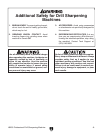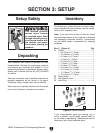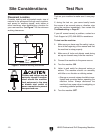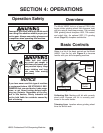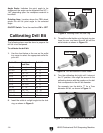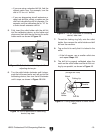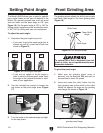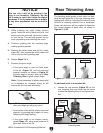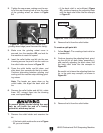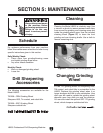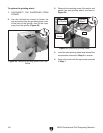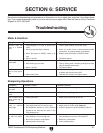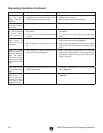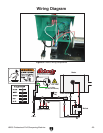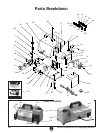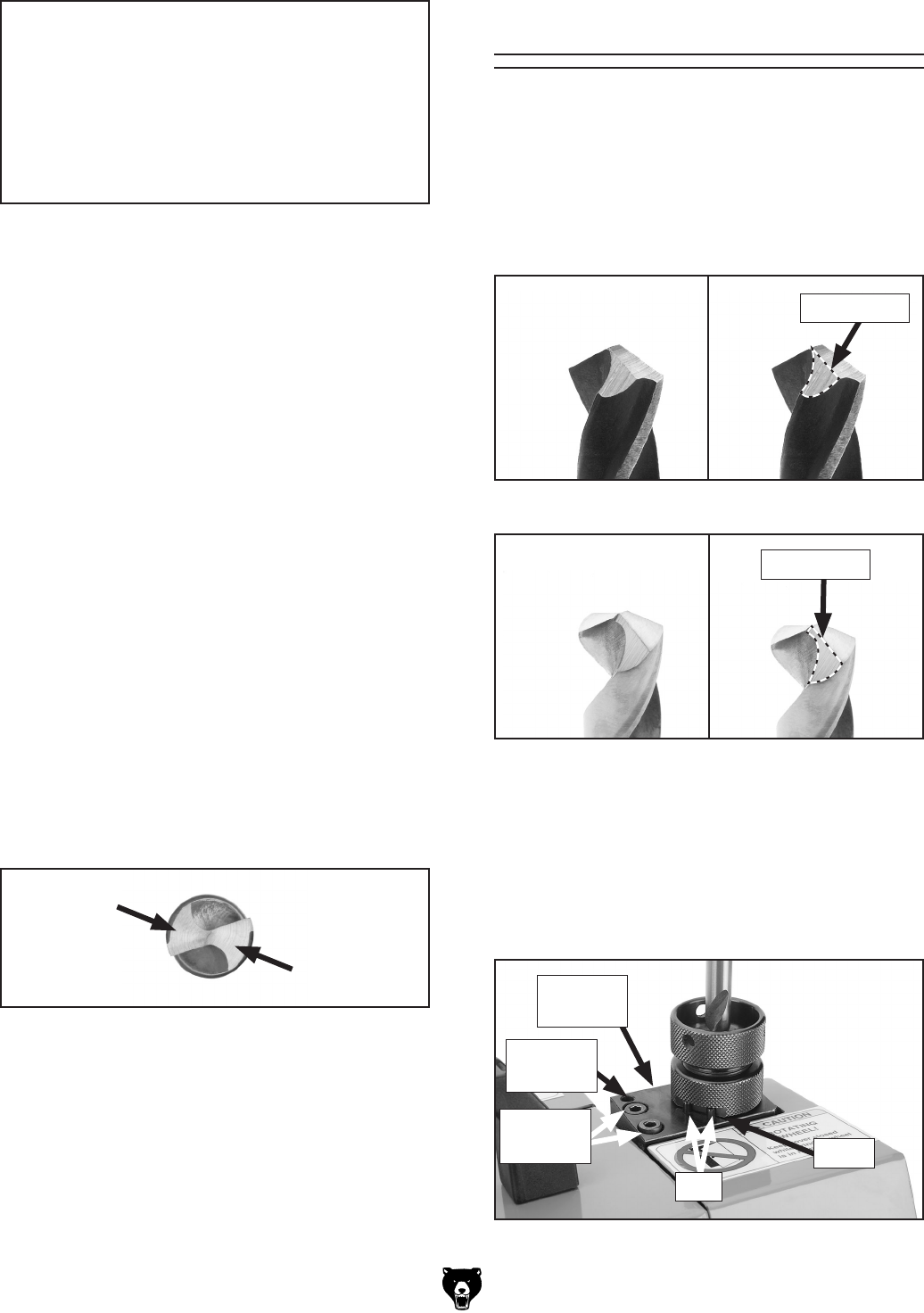
H8203 Professional Drill Sharpening Machine
-17-
3. While pressing the collet holder forward
gently, rotate the drill bit back and forth, and
about every four seconds, dip the bit in water
to cool the tip. This will help prevent the tip
from overheating and softening too much.
4. Continue grinding until the machine stops
making grinding sounds.
5. Remove the collet holder and drill bit, rotate
them 180º, then reinsert the collet holder and
drill bit into the front grinding area.
6. Repeat Steps 3 & 4.
7. Examine the point angle.
—If the point angle is even on both sides
of the bit, (
Figure 16), and no unground
material remains, as shown in
Figure 20,
the point angle is correct. Now,
go to Rear
Trimming Area to grind a back angle.
Note
: It is not necessary to grind a back relief
on a standard bit. However, doing so will
ensure the bit cuts more efficiently.
Rear Trimming Area
The grinding wheel grinds a back relief on stan-
dard and split point bits in the rear trimming area.
Adding back relief to a standard bit makes it more
efficient in removing material from a workpiece.
Some trial and error will be needed to determine
the correct amount of back relief, as shown in
Figures 21 & 22.
Figure 21. Correct back relief for standard bit.
Back Relief
Figure 22. Correct back relief for split point bit.
Figure 23. Collet and bit inserted into rear
trimming area.
Notch
Pins
Cap
Screws
Set
Screw
Adjusting
Block
To add back relief to a standard bit:
1. Loosen the cap screws (Figure 23) on the
rear trimming area and lower the set screw
to raise the adjusting block to its highest posi
-
tion.
Figure 20. No unground surfaces remain on bit
after point angle grinding (top view).
—If the surface of the drill bit retains unground
material, try grinding the bit again, or use a
different point angle setting.
—If the point angle is not shaped evenly,
repeat Steps 1-6, using even pressure to
grind both sides of the bit.
Back Relief
NOTICE
You can ruin a drill bit by grinding it too
long or too forcefully. Frequently dip the
bit in water to cool it and retain its original
hardness. If the tip becomes blue or purple,
it may have overheated and be too soft to
use.



